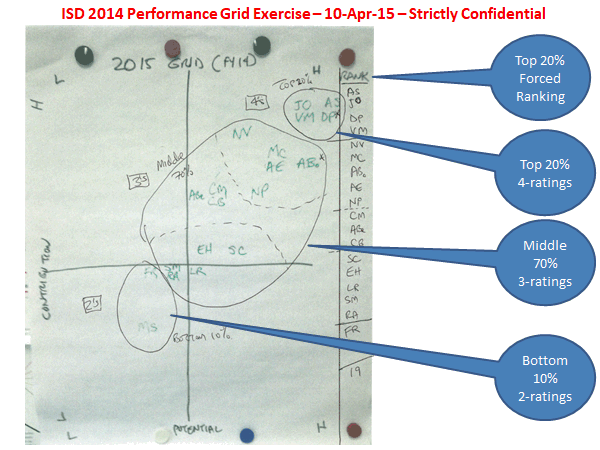In one of the entrepreneurial companies I worked, we had a competitive annual performance process. We would do a ranking every year. I would get all the managers together and we would put a big flip chart up in the front of the room. We would have closed doors because this is a very private meeting and ask on the two dimensions on this flip chart were potential and contribution measure and contribution contribution, potential contribution. So an individual who's a new employee may have a high potential, but they're going to have a low contribution because they're in the learning curve phase. They're taking things from the organization rather than giving things to the organization.
And so they would start off in that lower part of that matrix. And typically, you would not hire people who are not high potential. No, but sometimes over time, you'd have some employees that may be medium potential. So we had, there were nine boxes on this grid. So we had low, medium high on contribution and low, medium high on potential.
Those people who had the highest potential and the highest contribution, those were your stars, and you made sure that they got the highest increase or the most stock options. Those people that were in that higher box and those people that were in the lower boxes got less of an increase.
But it's very much so that in that system, it includes contribution, which is what they merited, what they earned. And it includes potential where you think somebody's got the ability to go. So you may have a very valuable person on your team who's not contributing enough yet, but has a lot of potential. You see that there's a lot of potential. And your encouragement to them is, you may say, okay, you're getting an average salary increase for this year, but you have a lot of potential and it should be a higher amount next year.
Here's what you need to do to demonstrate that. Right. So the notion is that not everybody's in the same place and that you want to, the amount of salary increase you give, you want to differentiate based on, based on value. And value is the combination of contribution and potential.
Stars are people with high potential and high contribution. So are those with high potential only (newcomers) and high contribution only (seniors)
That's the system that I learned from a vice president of sales, in a division of Chase Manhattan bank that I worked for. They called it the management grid exercise.
Sample Exercise
Bill Nelson's contribution - potential performance grid. Competitive placement Go back and ask the top rated person for next management position no matter how many times they say no. Right of first refusal.

From E:\Dropbox\Work\HRD\Appraisals\2016\ISD 2015 Grid Exercise + rankings.pptx |